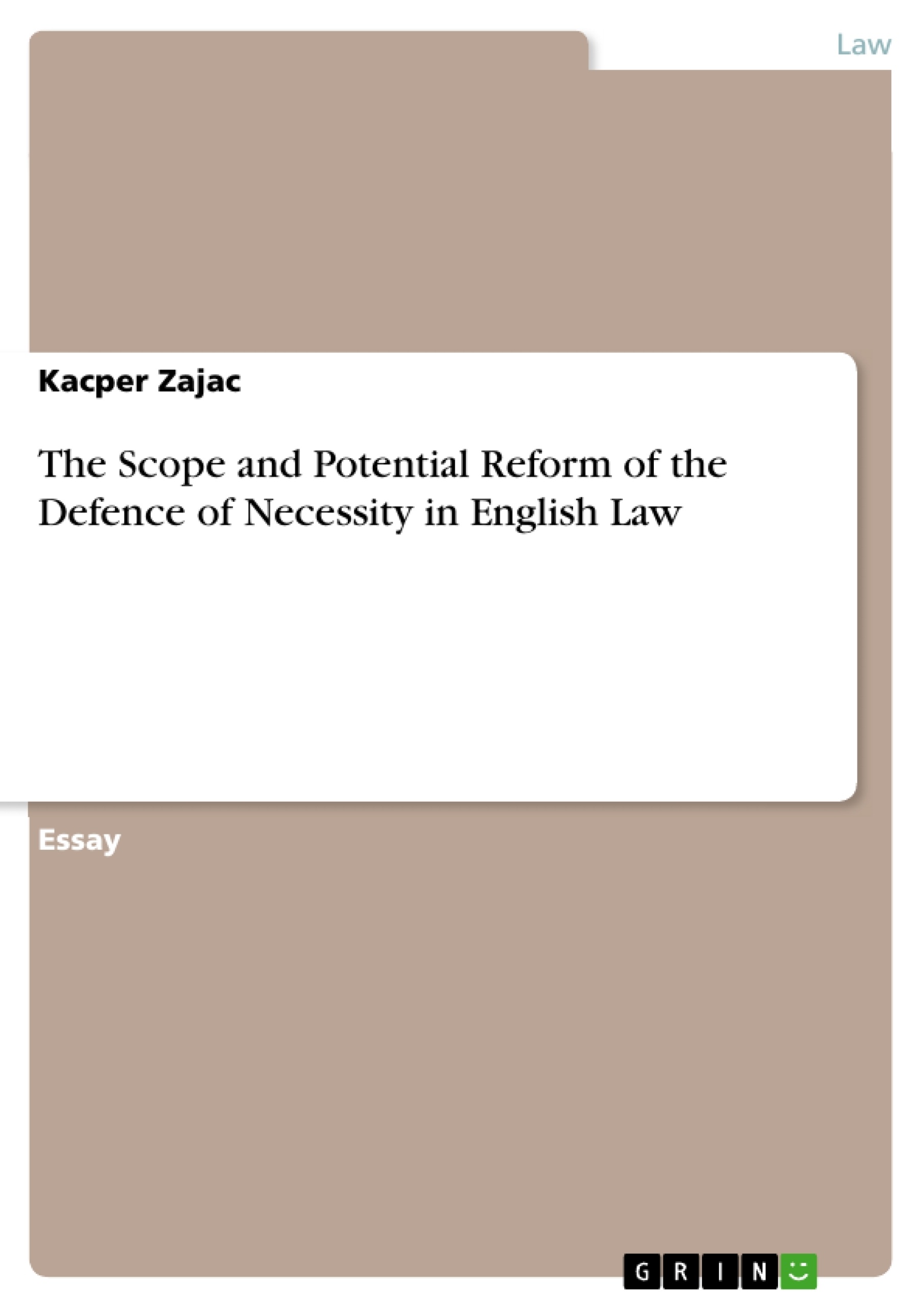The purpose of this essay is to explain and critically examine the scope of the defence of necessity and suggest its reform.
Inhaltsverzeichnis (Table of Contents)
- Defence of Necessity
- Necessity vs. Duress of Circumstances
- Statutory Defence
- Medical Cases
- Murder and Attempted Murder
- The US Approach
Zielsetzung und Themenschwerpunkte (Objectives and Key Themes)
This essay critically examines the scope of the defence of necessity in English criminal law, highlighting its limitations and suggesting potential reforms. The essay explores the relationship between necessity and duress of circumstances, analyzing the distinction between these defences in detail.
- The legal framework and definition of the defence of necessity
- The distinction between necessity and duress of circumstances
- The application of necessity in various contexts, including medical cases, murder, and attempted murder
- The role of statutory defences and the implications of the 'double effect doctrine'
- Potential reforms and arguments for the recognition of necessity as a more robust defence
Zusammenfassung der Kapitel (Chapter Summaries)
- Defence of Necessity: This section defines the defence of necessity and outlines its scope in English law. It highlights the limitations of the defence and its controversial nature, noting the courts' reluctance to recognize it.
- Necessity vs. Duress of Circumstances: This chapter analyzes the distinctions between necessity and duress of circumstances, emphasizing the key differences in their nature, application, and legal outcomes.
- Statutory Defence: This section explores instances where the defence of necessity is implicitly or explicitly recognized in statutory provisions, such as in relation to speeding, traffic light violations, and property destruction.
- Medical Cases: This chapter examines the application of necessity in medical contexts, focusing on cases involving patient consent, sterilization, and the treatment of mentally disabled individuals.
- Murder and Attempted Murder: This section delves into the legal principles regarding the defence of necessity in cases of murder and attempted murder, exploring the rationale behind its exclusion and examining prominent cases.
- The US Approach: This chapter compares the English approach to the defence of necessity with its application in the United States, highlighting similarities and differences in legal precedent.
Schlüsselwörter (Keywords)
This essay focuses on the defence of necessity in English criminal law, analyzing its scope, limitations, and potential reforms. The essay explores the key concepts of necessity, duress of circumstances, and the distinction between justificatory and excusatory defences. It examines the application of necessity in various contexts, including medical cases, murder, and attempted murder. Additionally, the essay delves into the role of statutory defences and the implications of the 'double effect doctrine'.
- Quote paper
- Kacper Zajac (Author), 2013, The Scope and Potential Reform of the Defence of Necessity in English Law, Munich, GRIN Verlag, https://www.grin.com/document/353646



